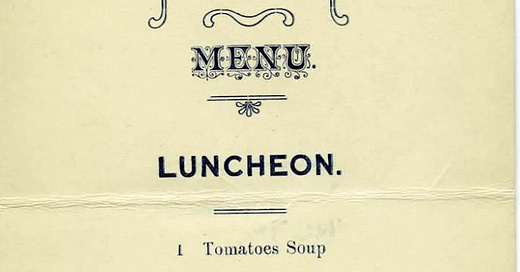Malayan Colonial Cuisine
Heritage Hotels, Rest Houses, Eurasian Kitchens & Hainanese Cooks
Overview
Growing up in the sixties in post independent Malaysia I have strong memories of a type of colonial era cuisine that was a hybrid of European and local culinary traditions. This could be European dishes accented with Asian flavourings like cloves and cinnamon or eaten with condiments like Lea & Perrins or HP sauce that included Asian ingredients like Tamarind. There were also hybrid and local dishes but moderated for European tastes all served with a European formality (plates, silverware, napkins) in elegant Colonial rooms in a tropical setting.
Heritage Hotels & Rest Houses
The food at heritage hotels like the Railway Hotel in Kuala Lumpur that we sometimes stayed at, and at Rest Houses that we would stop in on our travels driving through Peninsula Malaysia would be primary examples of this cuisine. There was also a rest House opposite my grandmother’s house in Muar and it would be a regular weekly treat to have lunch there when I stayed with her during school vacations.

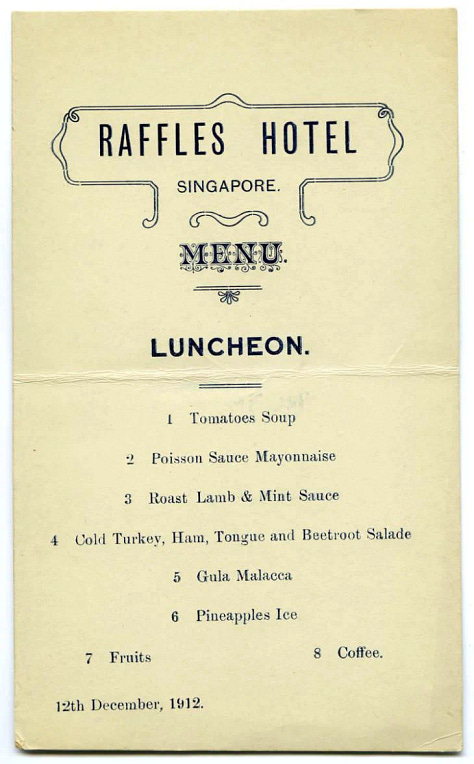

Raffles Hotel Dining Room | Lunch Menu | Dinner Menu
I remember the breakfasts at the Railway hotel which a uniformed waiter would bring to the room on a tray under a domed silver cover of bacon and eggs, kippers, fresh fruit, orange juice, fresh fruit, toast, and jam.
Occasionally we would have lunch or dinner at the hotel restaurant and the food would be similar to what we would find on the menu of rest houses with European type dishes like prawn cocktail, meat pies, pork chops or roast chicken with sides of baked or mashed potatoes. There were also local favourites like fried rice and Hailam noodles.
Afternoon tea was another specialty: scones, cakes, sandwiches, and pastries, influenced by British traditions but sometimes there were local twists: spicy sardine or dried prawn sambal and cucumber sandwiches.
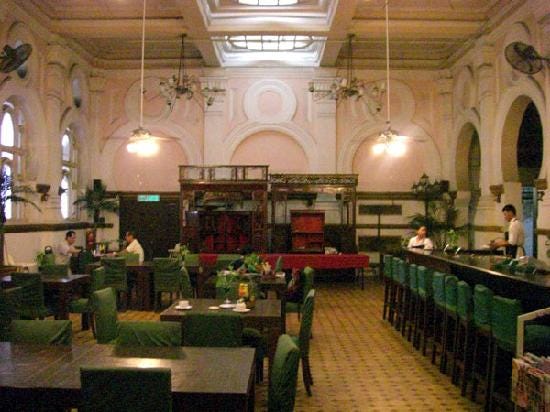
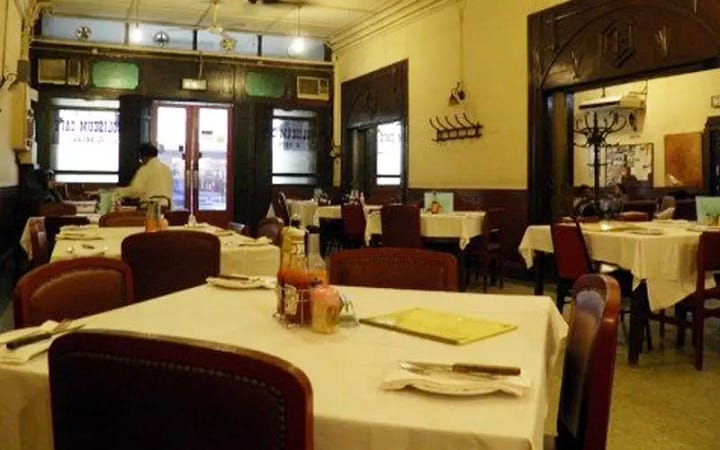
Heritage Station Hotel now closed | Cafe Coliseum is still open.
What animates these culinary memories however was the dining experience - large elegant dining rooms often with doors that opened out to garden verandahs and wait staff in white jackets. The furniture which could be described as Anglo Indian style with leather or rattan upholstered chairs, paired with dark wood tables, counters and sideboards. Tables were covered in white linens with napkins, napkin rings and heavy silver plated cutlery. An assortment of sauces: Lingam’s chilli sauce, Lea & Perrins and HP Barbecue sauce and butter dishes were almost always part of the table arrangement. Food would be served on white plates crested with the establishment’s branding.
Once populated with a clientele made up of British plantation managers and civil servants, the post war years reconfigured that mix to reflect an emerging educated class of local professionals: doctors, lawyers and teachers. Slowly though these establishments dwindled. Nowadays there are no rest houses left and only a handful of hotels like the Raffles in Singapore, Eastern Oriental in Penang and Majestic and Coliseum cafe in Kuala Lumpur remain in operation.
Eurasian Kitchens
These culinary memories overlap with food I ate at home. Neither my mother or grandmother cooked but pot roasts, pork chops, shepherds pies, sliced steak and onions would be standard fare at our dinner table made by a pair of Cantonese amah sisters ( Amah Tua who worked at my grandmother's house and Ah Kuan who worked at ours). Both had been trained at my great aunt Edna’s home in Singapore.
Amah Tua’s repertoire was more European, no curries or spicy food except for Lingam’s chili sauce with regular deserts of bread and butter pudding and butter cake for afternoon tea . Ah Kuan’ s was a little more varied there were Chinese dishes of steamed egg and pork braised in soy sauce and she became increasingly skilled at making curries. In both cases, European type foods were paired more extensively with Asian ones - stews, chops and cutlets served with rice, curries and sambals.
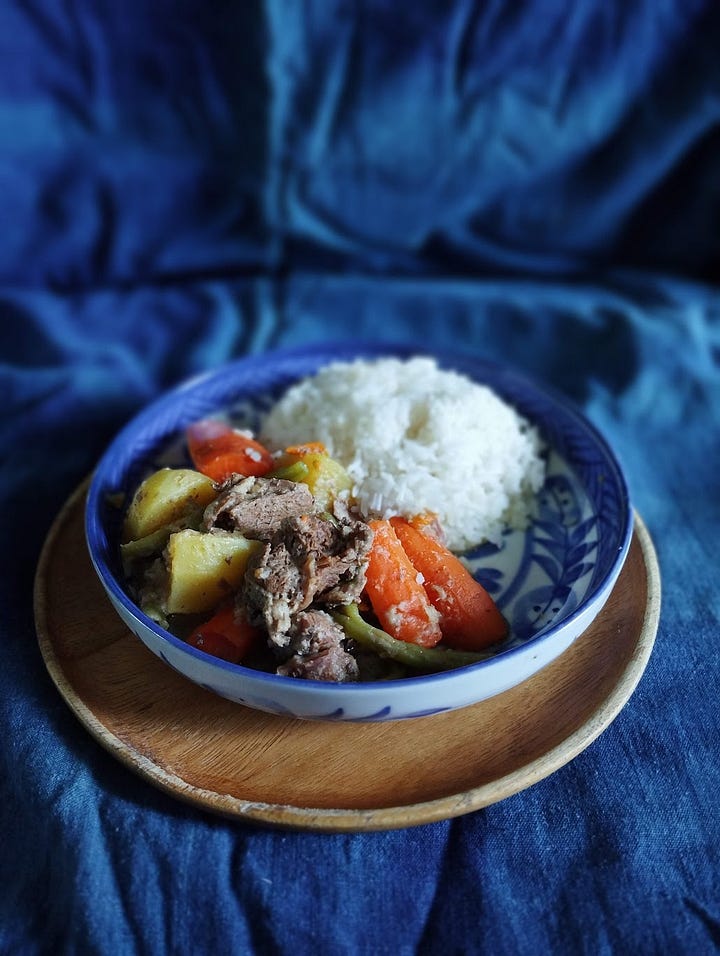
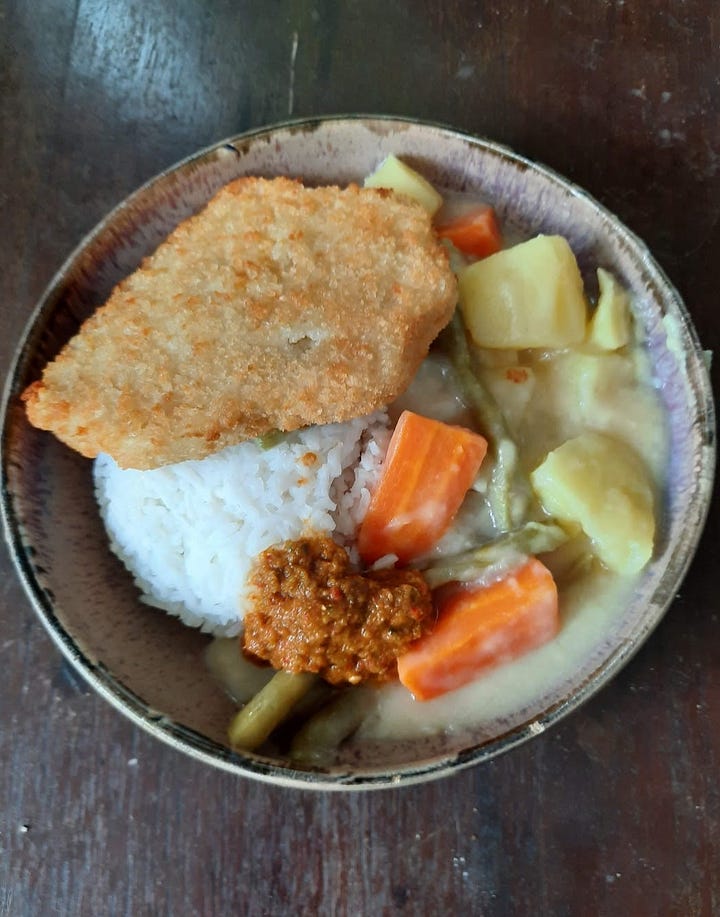
Ellice Handy, a Singapore Eurasian who wrote one of the earliest Malaysian cook books “My Favourite Recipes” reflected this expansion of local flavours and dishes into an assortment of European ones: Chicken Pie, Shepherd’s Pie, Mulligatawny soup, Cutlets, Beef Steak, Pot Roast, Lamb and Pork Chops mingled with Devil curry, Dutch Chicken curry and Smores ( a spiced stew). Newer Eurasian cookbooks until today reflect this hybrid cuisine found on Eurasian dining tables transitioning our colonial past with our new post independence identity.
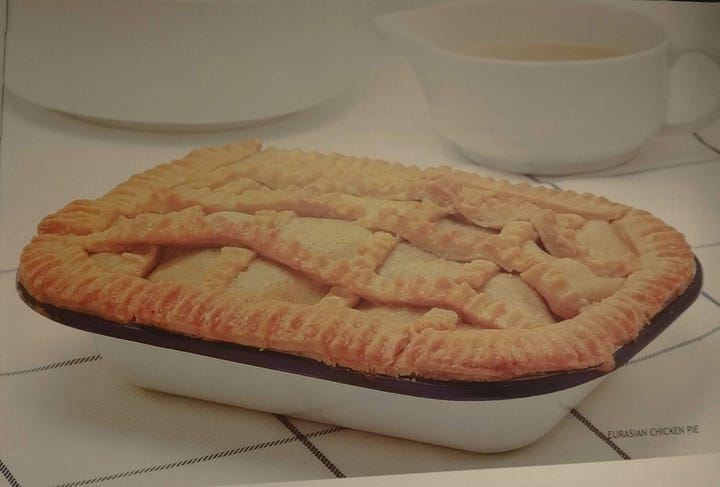
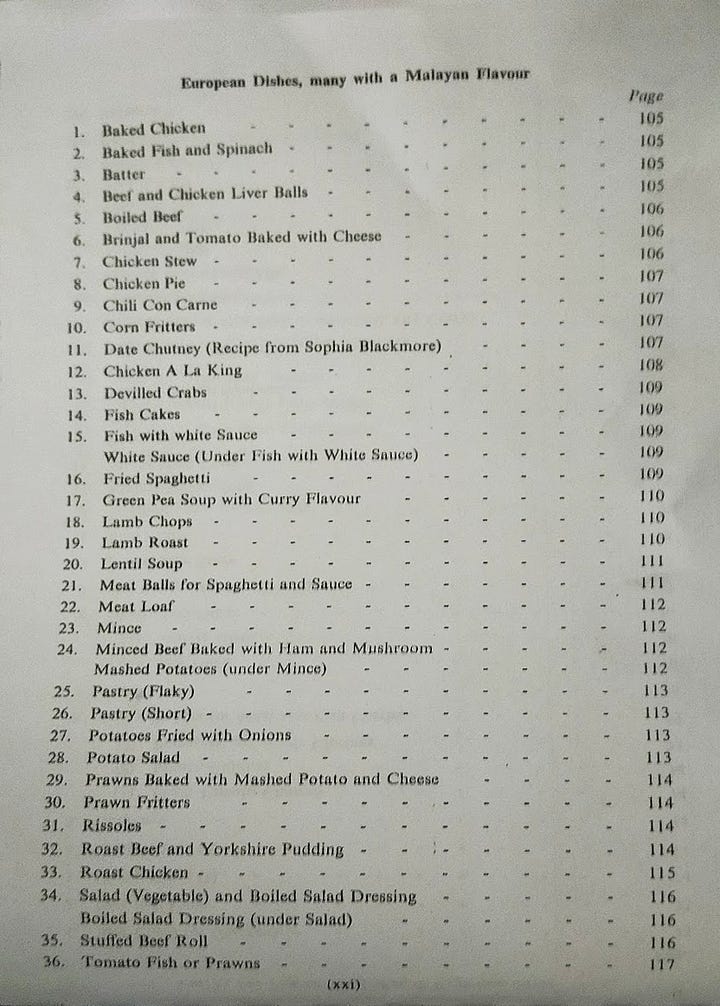
Hainanese Cooks
Before Amah Tua came to work for my grandparents, they had two male Hainanese cooks who worked on rotation. They lived in servants quarters in an annexe connected to the main house by a covered walkway. On the side of that annexe was firewood piled up almost to the eaves of the roof for the daily food preparation on old fashioned wood fired stoves. The food served was as described above
The Hainanese were among the last groups of Chinese immigrants to arrive in British Malaya, beginning in the late 1800s and continuing into the early 20 th century. Many of them worked as cooks in hotels, rest houses, ships and private residences of Europeans and Eurasians. The unique set of circumstances of low property rentals and diminishing employment opportunities eventually led them into their new careers as entrepreneur coffee shop owners bringing the skills and recipes they learnt into founding what we now know as our Kopitiam culture.



Recently I visited a hawker centre in the Pelangi area of Johor Bahru. I ordered two of my regular favourites - Penang style Fried Kway Tiao and a bowl of assorted stuffed Yong Taufu. Kway tiao is attributed to the Teochows and Hokkiens from Guangdong and Fujian areas on the South East coast of China. Yong Tau fu is said to be an adaptation by the Hakka to the scarcity of wheat flour in southern China where they had migrated to from the central plains.
But the cooks and wait staff manning the stalls were not from China, they were Cambodians at the Kway Tiao stall and Indonesians at the Yong Tau Fu one. The fact that Cambodians and Indonesians cook it certainly don’t detract from how good and somewhat authentic they are but I would never think of Kway Tiao as Cambodian or Yong Tau Fu as Indonesian simply because the cooks are.
And this is why I have an issue with food I grew up eating in my Eurasian home or more broadly as Colonial Malayan cuisine now being described as Hainanese Cuisine. The Hainanese are certainly great cooks but the cuisine they built their kopitiam businesses on, which they may have added some of their own flourishes like soy sauce or rice flour, was not authored by them. The term should be Malayan Colonial and/or Eurasian cuisine that truly reflects and represents an evolution and hybridisation of culinary ingredients and methods that began in the early East Indies era 500 years ago. At best this is an incomplete recollection of our culinary history that has no memory beyond the early 20th century, at worst this is an erasure of the Eurasian kitchen from Malaysia’s culinary history.
This history is also one of agriculture ( coffee and sugar plantations, animal husbandry ) new food ingredients and technologies ( dutch ovens, baking, jam making, wheat flour, dairy ) and the movement of people and ideas that helped shape it.
Contemporary Malaysian Cuisine
The building blocks of this Colonial Cuisine has branched further into contemporary Malaysian cuisine- there’s Kopitiam - toast with eggs and Kaya ; Hainanese - chicken chop, Western steaks, pies and fish and chips ( with many new American additions- Burgers and Pizzas) and Cafes & Bakeries mainly with European style cakes and pastries. Some items like pineapple tarts and curry puffs once featured at Eurasian teas and at Christmas time have become very broadly popular. These now have their own lanes alongside more local based cuisines developed from the Malay, Indian and Chinese community.


